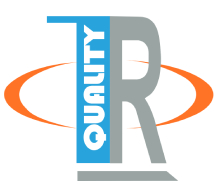In today’s globally interconnected world, calibration plays a critical role in ensuring the accuracy and reliability of measurements across various industries. International standards in calibration provide a universal benchmark that facilitates consistency, precision, and quality in manufacturing and service sectors. This article delves into the significance of these standards and their profound impact on quality assurance.
What Are International Calibration Standards?
International calibration standards are guidelines and protocols developed by international bodies to ensure that measuring instruments and methods meet specified accuracy and precision criteria. These standards are crucial for maintaining uniformity in measurements, which is essential for trade, safety, and technological advancement.
Key Organizations Developing Calibration Standards
Several organizations are pivotal in developing and maintaining calibration standards:
- International Organization for Standardization (ISO): ISO develops and publishes a wide range of standards, including those related to calibration.
- International Electrotechnical Commission (IEC): IEC focuses on electrical and electronic standards.
- International Bureau of Weights and Measures (BIPM): BIPM ensures uniformity in measurement units and methods globally.
Importance of Calibration in Quality Assurance
Calibration is the process of comparing a measurement device or system against a known standard to verify its accuracy. This process is integral to quality assurance for several reasons:
Ensuring Measurement Accuracy
Accurate measurements are crucial in manufacturing, healthcare, aviation, and numerous other fields. Calibration ensures that instruments provide precise and reliable data, which is essential for maintaining product quality and safety.
Compliance with Regulatory Requirements
Many industries are subject to stringent regulatory standards that mandate regular calibration of measuring instruments. Compliance with these regulations is critical to avoid legal issues and ensure market access.
Enhancing Product Quality
High-quality products result from precise measurements and stringent quality control. Calibration helps identify and rectify discrepancies in measurement tools, leading to better product quality and customer satisfaction.
Types of Calibration Standards
Calibration standards vary based on the type of instrument and the industry. Some common types include:
Primary Standards
Primary standards are highly precise and accurate reference points. They are typically maintained by national or international laboratories and serve as the basis for calibrating other instruments.
Secondary Standards
Secondary standards are calibrated against primary standards and are used for routine calibration in various industries. They are less precise than primary standards but still provide high accuracy.
Working Standards
Working standards are used for everyday calibration tasks. They are regularly checked against secondary standards to ensure ongoing accuracy and reliability.
Implementing International Calibration Standards
Implementing international calibration standards involves several key steps:
Selecting the Right Standards
Choosing the appropriate standards for your industry and specific instruments is crucial. This selection should be based on the type of measurements required and the level of precision needed.
Regular Calibration and Maintenance
Regular calibration and maintenance of instruments are essential to ensure they remain accurate and reliable. This process should be documented and scheduled according to industry regulations and standards.
Training and Competence
Personnel responsible for calibration should be adequately trained and competent. This ensures that calibration processes are performed correctly and consistently.
Challenges in Calibration
Despite its importance, calibration presents several challenges, including:
Cost of Calibration
Calibration can be expensive, particularly for small and medium-sized enterprises. The cost includes equipment, personnel training, and regular maintenance.
Keeping Up with Technological Advances
Rapid advancements in technology can render existing calibration methods obsolete. Staying current with new standards and methods is essential but challenging.
Maintaining Traceability
Traceability ensures that calibration results can be traced back to international standards. Maintaining this traceability requires rigorous documentation and regular verification.
Future Trends in Calibration
The field of calibration is evolving, with several emerging trends poised to shape its future:
Automation and Digital Calibration
Advances in automation and digital technology are transforming calibration processes. Automated systems and digital calibration tools offer higher accuracy and efficiency.
Enhanced Traceability and Transparency
Innovations in blockchain technology are improving traceability and transparency in calibration. This technology provides a secure and immutable record of calibration data.
Sustainable Calibration Practices
Sustainability is becoming a key focus in calibration. Efforts to reduce waste and energy consumption in calibration processes are gaining traction.
Conclusion
International standards in calibration are indispensable for ensuring accuracy, consistency, and quality in measurements across various industries. By adhering to these standards, organizations can enhance product quality, comply with regulatory requirements, and gain a competitive edge. As technology advances, the field of calibration will continue to evolve, bringing new challenges and opportunities for quality assurance.


